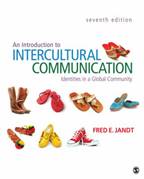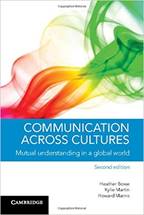
|
In light of globalization, cross-cultural communication and cultural awareness have become increasingly important in a diverse and multicultural world. This book explains the layers of meaning of culture based upon the theories of leading academics. It also identifies the barriers to effective cross-cultural communication and suggests practical strategies to overcome them. The authors provide practical examples from their own experience.
Highlights include:
Definition of culture (p.4), barriers to effective communication (pp.10-11), on ambiguity, perception and stereotypes (pp.13-15), monochronic and polychronic cultures (p.27), high context and low context dimensions (p.29), Hofstede’s four dimensions of power distance, individualism, masculinity, uncertainty (p.31), and the sixth dimension of indulgence versus restraint (p.40-41), the Mole Map (p.55), Lewis’s Cultural Model (p.57).
|

|
Cross-cultural communication is essential in an educational setting as well as in the workplace. This book explains the broader concept in relation to cultural identity and cultural frameworks, including background and experience. It helps students in making a difference in the world by forging healthy and productive relationships with people of other cultures.
Highlights include:
Cultural identity (pp.59-84), cultural frames of reference (pp.83-107), intercultural communication and friendship (pp.197-218), diversity in educational settings (pp.247-250), intercultural communication in the workplace (pp.269-291).
|

|
This book emphasizes family, religion and history as key variables in intercultural communication, aspects which are less commonly explored in books on cultural communication. With in-depth research and compelling examples, this book aims to challenge assumptions and cultural biases. It helps students understand the ways culture affects communication in different contexts.
Highlights include:
The importance of history (chapter 4), worldview: cultural explanations of life and death (chapter 5), cultural influences on communication contexts: responding to the setting (chapter 10).
|

|
Having defined the culture as a context for communication and introduced intercultural communication in Part 1, the book then details communication variables, cultural values, and how immigration induces cultural impacts and cultural contact. The book draws on case studies of communication behaviours in different cultural contexts so as to help you enhance your intercultural communication competence through understanding perceptions of and reactions to cultural behaviours.
Highlights include barriers to intercultural communication (pp. 80-105), contact between cultures (pp. 278-303), and descriptions about culture shock (pp. 309-311).
|

|
Exploring how cultural context affects the use and understanding of language, the book elaborates components of context in Part I and presents conversation studies across cultures in Part II. The final part reveals how various facets of cultural context come into play. The book appeals to readers who want to improve intercultural communication skills through identifying cultural context components.
Highlights include conversation across cultures (pp. 95-117) and successful intercultural communication (pp. 227-244).
|